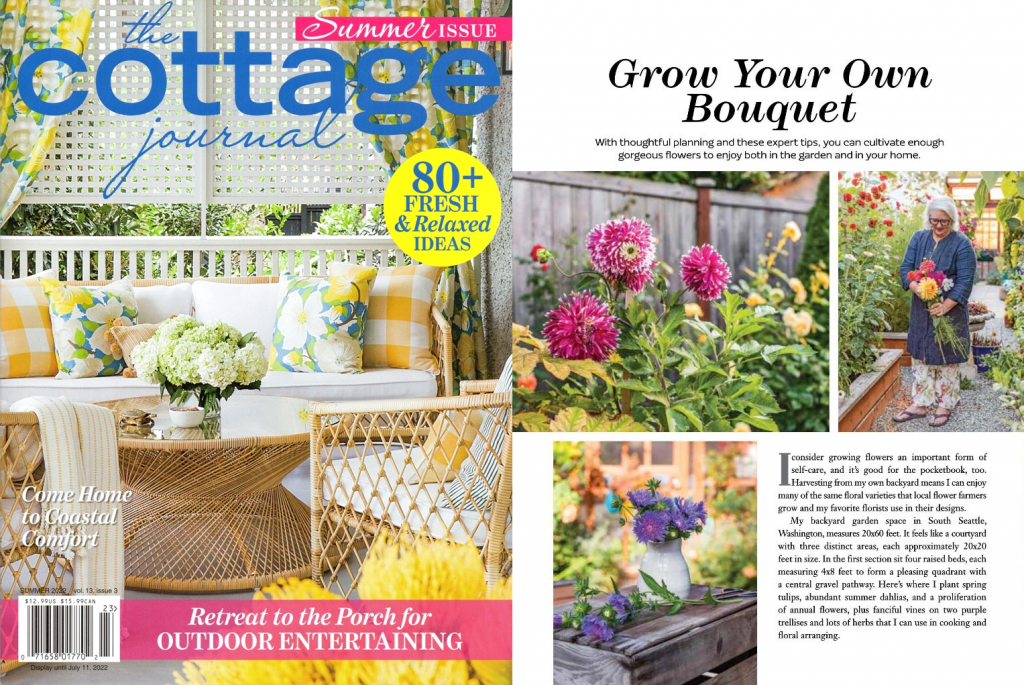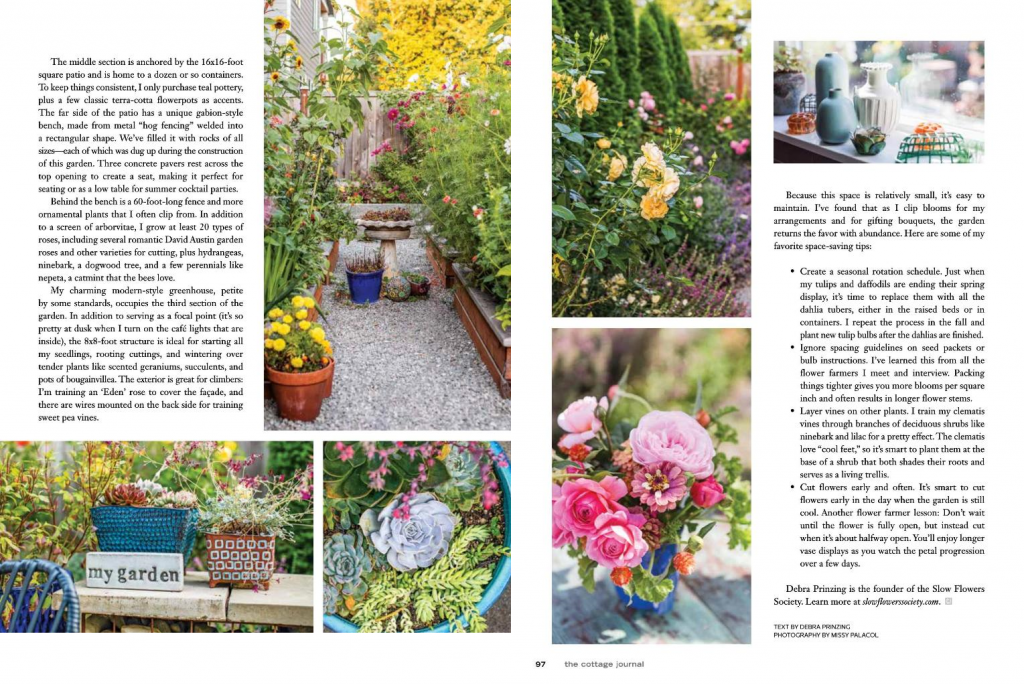Debra Prinzing shares tips on growing gorgeous blooms in the home garden
Photography by Missy Palacol

I consider growing flowers an important form of self care, and it’s good for the pocketbook, too. Harvesting from my own backyard means I can enjoy many of the same floral varieties that local flower farmers grow and my favorite florists use in their designs.
My backyard garden space in South Seattle measures 20-by-60 feet. It feels like a courtyard with three distinct areas, each approximately 20-by-20 feet in size. In the first section, there are four raised beds, each measuring 4-x-8 feet to form a pleasing quadrant with a central gravel pathway. Here’s where I plant spring tulips, abundant summer dahlias and a proliferation of annual flowers, plus fanciful vines on two purple trellises, and lots of herbs that I can use in cooking and floral arranging.
The middle section is anchored by the 16-by-16 foot square patio and is home to a dozen or so containers. To keep things consistent, I only purchase blue-teal pottery, plus a few classic terra cotta flower pots as accents. The far side of the patio has an unique gabion-style bench, made from metal “hog fencing” and welded into a rectangular shape. We’ve filled it with rocks of all sizes — each of which was literally dug up while building this garden. The “seat’ is formed by three concrete pavers that rest across the top opening. It’s perfect for seating or as a low table for summer cocktail parties.
I’ve found that as I clip blooms for my arrangements and for gifting bouquets, the garden returns the favor with abundance.
Behind the bench is a 60-foot-long fence and more ornamental plants that I often clip from. In addition to a screen of arborvitae, I grow at least 20 roses, including several romantic David Austin garden roses and other varieties for cutting, plus hydrangeas, ninebark, a dogwood tree, and a few perennials like nepeta, a catmint that the bees love.
My charming modern-style greenhouse, petite by some standards, occupies the third section of the garden. In addition to serving as a focal point (it’s so pretty at dusk when I turn on the cafe lights that are inside), I use the 8-by-8 foot structure for starting all my seedlings, rooting cuttings, and for wintering over tender plants like scented geraniums, succulents and pots of bougainvillea. The exterior is great for climbers: I’m training an Eden rose to cover the facade and there are wires mounted on the back side for training sweet pea vines.

Because this space is relatively small, it’s easy to maintain. I’ve found that as I clip blooms for my arrangements and for gifting bouquets, the garden returns the favor with abundance. Here are some of my favorite space-saving tips:
- Create a seasonal rotation schedule. Just when my tulips and daffodils are ending their spring display, it’s time to replace them with all the dahlia tubers, either in the raised beds or in containers. I repeat the process in the fall and plant new tulip bulbs after the dahlias are finished.
- Ignore spacing guidelines on seed packets or bulb instructions. I’ve learned this from all of the flower farmers I meet and interview. Packing things tighter gives you more blooms per square inch and often results in longer flower stems.
- Layer vines on other plants. I train my clematis vines through branches of deciduous shrubs like ninebark and lilac for a pretty affect. The clematis love “cool feet,” so it’s smart to plant them at the base of a shrub that both shades their roots and serves as a living trellis.
- Cut flowers early and often. It’s smart to cut flowers early in the day when the garden is still cool. Another flower farmer lesson: Don’t wait until the flower is fully open, but instead cut when it’s about half-way open. You’ll enjoy longer vase displays as you watch the petal progression over a few days.
Debra Prinzing is the founder of the Slow Flowers Society. Learn more at slowflowerssociety.com.

